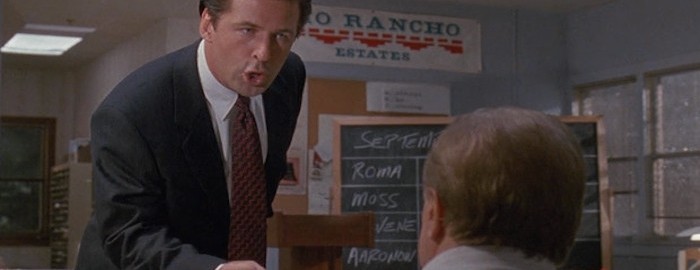The A-B-C of Selling
In the 1992 film, Glengarry Glen Ross, Alec Baldwin put the ‘A-B-C of Selling’ into folklore, ‘Always Be Closing’.
In the movie, Blake (played by Baldwin), an aggressive ‘son of a bitch’ trouble-shooter from head office, is sent to an under-performing real estate office to motivate the sales team. His motivational approach was based on ‘fail and you’re fired’. This threat together with his ‘Always Be Closing’ approach pushed the team to questionable and unethical sales behaviour to avoid the chop.
This is how many salespeople are seen by those not familiar with ‘good selling’ and sadly, it is also an approach adopted by those in the business who don’t treat the role of sales as a career and are looking for the ‘fast-money’. The ‘Always Be Closing’ approach requires the salesperson to be unrelenting in their efforts to close the deal.
Fortunately those who are professional in their approach to sales understand what good selling is about and do not adopt this definition of the ‘A-B-C of Selling’. To be successful in sales, we need to be professional. We need to treat our customers with the respect they deserve and we expect. We need to develop a level of trust. To achieve these things we need to be good communicators.
So let’s redefine the ‘A-B-C of Selling’ to ‘Always Be Communicating’.
In times past, the old adage ‘knowledge is power’ led to us trying to protect the knowledge we had at the expense of others. Today, the power in knowledge you possess comes from making it available to your target audience. My Sales Mastermind Australia (SMA) colleague, Tony Hughes made a decision several months back to open the doors to as much of his knowledge and IP as he could. He became a prolific blogger on LinkedIn Publisher and openly shared his thoughts and ideas. The results have been phenomenal. He has been recognised as one of the Top 50 Global Sales Influencers and Top 100 on Social Media , picked up numerous key-note speaking roles and now has prospective clients chasing him, rather than the other way.
To be successful in sales in today’s market we do need to be continually communicating with our target market.
The following 5 tips will help you present your offering to prospective clients in the best possible way to ensure you are ‘Always Communicating’:
1. Define your ideal client
No matter how good your product or services, no matter how good your communications skills; if you are talking to the wrong audience it is wasted. The first step in developing a communications strategy needs to be to clearly understand your target market and more specifically, your ideal client. Your ideal client is a business that will find the perfect solution to their problems or needs in the products or services you offer.
2. Build Your Profile
Even before engaging with your client, you can bet your client has engaged with your company, if not you. And you won’t even know it. In today’s connected world you need to build a personal profile that is visible online and demonstrates to your ideal clients that you are worthy of them spending time with you. That you can improve their business; helping them solve their problems or generate more profits. That you have the knowledge, skills and experience to become a ‘trusted advisor’.
Communicating therefore starts before you engage with your prospect.
3. Know your client
To deliver value to your prospects ‘buyers journey’ you must understand their business. Research of your clients business and the individuals with whom you may engage during a sales process. Identify issues similar businesses may be facing or that the specific prospect may have. Start to develop an understanding of their problems (industry generic and business specific) and their business objectives. This information will allow you to begin more specific communications with your prospect, both directly and indirectly, that will help build trust.
4. Get the prospect involved
If you have done your research and are targeting a business that can benefit from the products and/or services you offer, you need to develop 2-way communication. Only by engaging in open dialogue will you be able to develop an intimate understanding of the prospect’s business. Without a detailed knowledge of the business, the problems they face, their objectives, the key players, the budget etc you will not be able to present a proposal that best suits their needs and delivers what they see as ‘value’. This needs to be your differentiator.
5. Focus your communication on the prospects’ needs
The Greek philosopher, Theophrastis, said “the most valuable thing a man can spend is his time”. So don’t waste it – your’s or the prospects. And remember, it’s not about you; or for that matter your company or your product. It’s about the prospect, their company and their needs. Focus your communication, in whatever form, at all times on what you, your company and the product or service you will deliver can do for them.
6. Continually create openings
Contrary to ‘Always Be Closing’ your communication should be continually creating openings. Openings to engage with the prospect. Openings to be introduced to other areas of the business, Openings to engage further in their decision making process. And when you eventually ‘close’ the deal, an opening to continue to be a trusted advisor – and this can only come by continually communicating with your client and market (back to point 1).
There was one thing Blake got right in the movie, the need to know when to cut your losses and move on. As well as knowing your ideal client, you need to understand if there is a real opportunity. In developing trust through open communication with your prospect, you will be able to quickly determine if there is a real opportunity, if you can compete, if you can win and is the sale going to be worth the effort.
















